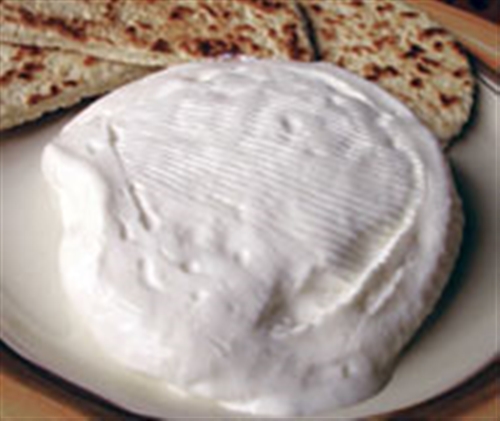SQUACQUERONE PDO

The "Squacquerone di Romagna" (Squaquaron) is often eaten together with piadina and goes well with the Colli Romagna Centrale Bianco or Romagna Pagadebit. It is a variant, together with the Cassatella, of the more historical Raviggiolo.
It is made up of raw whole cow's milk, which is curdled. What makes it different from Raviggiolo is the method of aging and salting. The form is indefinite (hence the name) with a weight of 1 to 3 kg, soft dough, tender without crust with milk taste slightly sour. It is produced throughout all the year but must be consumed fresh at up to three days.
The "Squacquerone di Romagna" (Squaquaron) is a cheese of ancient origins, closely linked to the rural environment. The farmers used to produce it and consume it during the winter due to the increased possibility to keep it for a few days. Despite its rural origins, Squacquerone was appreciated and consumed by the most refined palates, as evidenced by the correspondence sent by Cardinal Bellisomi, Bishop of Cesena, to Casali, vicar of the diocese of Cesena.
In one of these letters, dated February 15, 1800, the Cardinal, at that time in Venice to the Conclave that elected Cardinal Chiaramonte from Cesena to the papal throne under the name of Pius VII, asked information about the cheese requested and still not arrived.
Antonio Mattioli, in the Italian-Romagnolo Vocabulary of 1879, under the heading "Squacquaròn" refers to the word "Tumen". This item, as he says, "is perhaps derived from Toma, which means fat cheese. Clabber cheese." In this sense, the term comes from the Piedmontese dialect and corresponds to the common "Shape". The author goes further in explaining, pointing out that Petronius Arbiter, writer of the 1st century AD (author of the Satyricon) defines "caseum Mollem" what today might be reflected in the cheese Squacquerone.
The Squaquerone di Romagna is produced in the area around the Romagna Apennines.
The milk must be pasteurized at 37-38 degrees and the nit is added liquid rennet; coagulation occurs in 20-25 minutes. After the breaking of the curd it is left to settle to remove the excess serum. Then the mass is put into molds in 25 to 30 degrees and left to stand at 90-95% of humidity.
Initially the forms are continually stir, then more and more often; the operation ends when the dough has reached the right consistency; salting is done in brine for about two hours.
Mature in 4-5 days in a refrigerator at 3-4 ° C, where the cheeses are wrapped in paper, the yield is 11-12%.